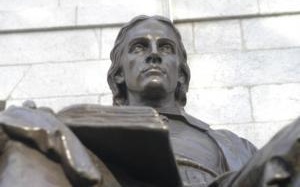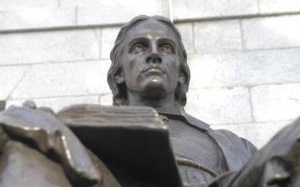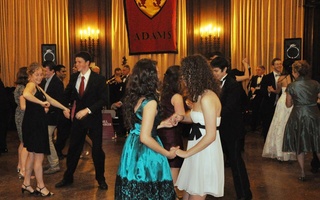Hoi Q. Nguyen ’10 was expecting a low-key shift while working one day in the Dunster House library a year ago.
As he sat at the desk near the entrance, with a view of the entirety of the library in front of him, he heard the sound of a knob turning from behind—an odd occurrence, because the library doors are usually propped open.
Caught off guard, Nguyen turned around to find the bookshelves opening up and a person nonchalantly walking into the library from behind its walls.
“I can imagine people going in there and doing shady business,” said Nguyen, who added that many undergraduates—including some Dunster residents themselves—don’t know about the swinging shelves.
From library walls opening up to unsuspecting residents to hidden rooms concealed behind seemingly unusable doors, such eccentric architectural features of the College’s neo-Georgian Houses are a surprising, but unique, aspect of the undergraduate experience. From their construction in the early 1930s to today, the stoic charm of these buildings has come to embody Harvard’s identity, both among its student body and to the outside world.
“I think in the case of the Harvard buildings, it was just an enduring sense of spatial wonder that led some patron to put a little extra charm in the houses,” said Harvard Graduate School of Design Professor K. Michael Hays.
But with House renewal—the estimated $1 billion project to physically reconstruct and modernize the College’s 12 upperclassman Houses—slated to begin in three years, undergraduates, tutors, and House Masters all voiced concerns over whether the initiative will leave intact the neo-Georgian Houses’ architectural oddities, which they say have contributed to the character of the Houses over the last eight decades.
CLANDESTINE PARTY SPACES
Residents who stumble upon elusive passageways and rooms in the neo-Georgian Houses—which include Adams, Cabot, Dunster, Eliot, Kirkland, Leverett (McKinlock), Lowell, Quincy (Old), and Winthrop Houses—often become the gatekeepers of these hidden spaces.
When Adams resident Toomas Laarits ’10 moved into C-57 last year, he and his roommates settled into what they thought would be a triple. A week into the school year, a senior whom Laarits had never met asked him for access to some “storage space” in his bedroom.
To his surprise, the senior opened a metal door in Laarits’ room that Laarits had previously overlooked, which led to a concealed bedroom. The triple in Adams C-57 was actually a quad.
After clearing out golf clubs and other vestiges of residents past, Laarits and his roommates decided to furnish the space, installing a chandelier in order to transform the dusty room—which prior residents of C-57 had used for storage—into a weekend party spot.
“Sometimes when we had parties there, people would come up to me the next day and say, ‘Did we go into a wall last night?’” Laarits said. “And then I’d say to them, ‘No—don’t know what you’re talking about.’”
While Adams residents have used the distinctive features of their rooms for personal use, some Kirklanders have incorporated their spaces into House-wide traditions.
Kirkland B-51 resident Michelle E. Seslar ’11 said her room hosts a “time-honored” Kirkland event, which she wasn’t “at liberty to expand upon,” as a result of a unique architectural configuration that allows the room to expand into a neighboring entryway.
Read more in News
SEAS Dean Charts Course


















